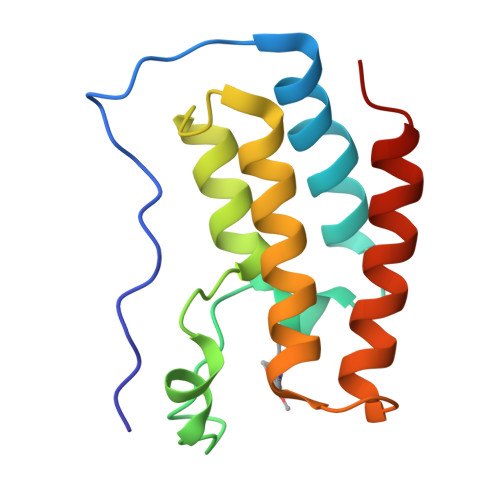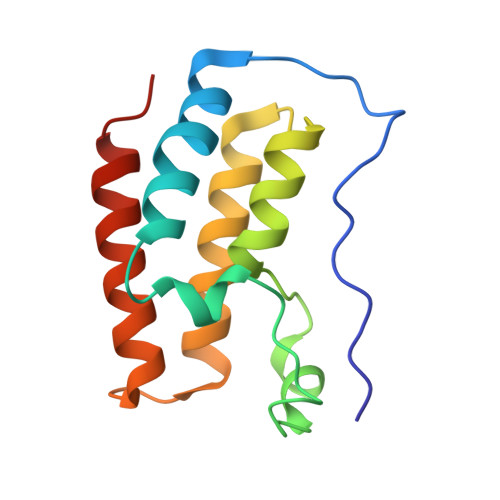Direct NMR Probing of Hydration Shells of Protein Ligand Interfaces and Its Application to Drug Design.
Geist, L., Mayer, M., Cockcroft, X.L., Wolkerstorfer, B., Kessler, D., Engelhardt, H., McConnell, D.B., Konrat, R.(2017) J Med Chem 60: 8708-8715
- PubMed: 28910100
- DOI: https://doi.org/10.1021/acs.jmedchem.7b00845
- Primary Citation of Related Structures:
5M39, 5M3A - PubMed Abstract:
Fragment-based drug design exploits initial screening of low molecular weight compounds and their concomitant affinity improvement. The multitude of possible chemical modifications highlights the necessity to obtain structural information about the binding mode of a fragment. Herein we describe a novel NMR methodology (LOGSY titration) that allows the determination of binding modes of low affinity binders in the protein-ligand interface and reveals suitable ligand positions for the addition of functional groups that either address or substitute protein-bound water, information of utmost importance for drug design. The particular benefit of the methodology and in contrast to conventional ligand-based methods is the independence of the molecular weight of the protein under study. The validity of the novel approach is demonstrated on two ligands interacting with bromodomain 1 of bromodomain containing protein 4, a prominent cancer target in pharmaceutical industry.
Organizational Affiliation:
Christian Doppler Laboratory for High-Content Structural Biology and Biotechnology, Department of Structural and Computational Biology, University of Vienna , Campus Vienna Biocenter 5, A-1030 Vienna, Austria.




















